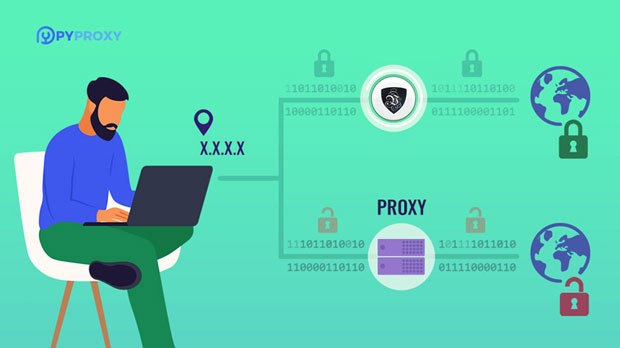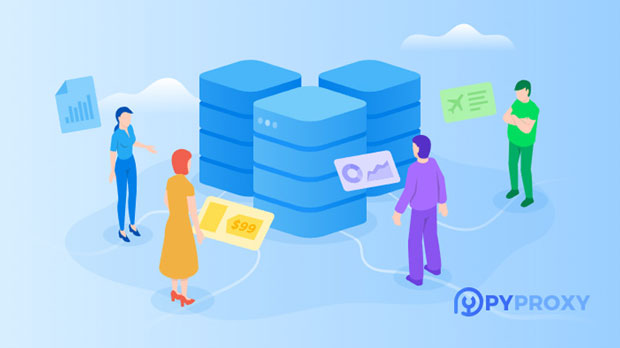In the era of digital transformation, proxy services are indispensable tools for users seeking enhanced privacy, security, and bypassing geographical restrictions. Wireless proxy environments, in particular, offer flexible and mobile solutions. Among the various proxy services, Crossy Proxy and PYPROXY stand out for their adaptability and performance. But how stable is their connection in such dynamic wireless settings? This article aims to dive into a detailed comparison, evaluating both proxies' connection stability, performance under various conditions, and practical implications for users seeking a robust and reliable service. By examining their strengths and potential pitfalls, we can uncover which service best meets the demands of modern wireless proxy environments. Introduction to Wireless Proxy EnvironmentsWireless proxies are increasingly relevant as businesses and individuals rely more on mobile devices and wireless networks for accessing information. These environments are inherently unstable, due to the fluctuating signal strength, interference, and potential for network congestion. As such, the stability of proxy services within these environments becomes critical. Users need a reliable connection that allows them to maintain their online presence without disruptions. The stability of proxy connections like Crossy Proxy and PyProxy is therefore pivotal in determining the overall user experience. Let's explore the factors that affect these proxies' performance in wireless environments.Factors Influencing Connection Stability in Wireless EnvironmentsThere are several key elements that impact the connection stability of proxies when used in wireless settings. These factors include:1. Signal Strength and Interference: Wireless environments are subject to interference from various sources, such as physical barriers, electronic devices, and competing networks. Strong signal strength is essential for a stable connection, and any interference can cause latency or dropped connections. 2. Network Congestion: High levels of traffic on wireless networks can lead to congestion, which impacts the overall bandwidth available. Proxies are sensitive to this congestion, and it can significantly affect their ability to maintain a steady connection.3. Device Mobility: One of the main benefits of wireless networks is mobility, but this comes with its challenges. As devices move between access points or encounter weak signals, the connection can be disrupted. This introduces instability, especially in proxies that rely on a consistent connection for data routing.4. Encryption and Security Protocols: Both Crossy Proxy and PyProxy use encryption to secure user data. However, the encryption level and the proxy’s ability to handle encrypted traffic can affect connection stability. Stronger encryption typically requires more processing power, which can lead to delays or interruptions if the network is not optimal.Crossy Proxy's Performance in Wireless EnvironmentsCrossy Proxy is a popular proxy service known for its simplicity and reliability in various network settings. It operates on the Python programming language, making it highly customizable and suitable for developers and tech-savvy users.1. Connection Stability: In wireless environments, Crossy Proxy performs well under moderate network conditions. However, its connection stability can degrade in environments with fluctuating signal strength or network congestion. Crossy Proxy’s performance depends largely on the underlying network infrastructure. In high-interference settings, the proxy may experience intermittent downtime or slower response times.2. Adaptability: One of Crossy Proxy’s strengths is its adaptability to different types of wireless networks. It can adjust to varying network conditions, such as changing IP addresses or DNS failures. Nevertheless, it is less suited for environments with constant network switching, as this can introduce latency and reduce the reliability of the connection.3. Security Considerations: Crossy Proxy’s strong encryption capabilities enhance its security but also add a layer of complexity to its operation. In wireless environments where bandwidth is limited, the encryption process can cause delays, especially on slower networks.PyProxy’s Performance in Wireless EnvironmentsPyProxy, on the other hand, is a modern proxy service that emphasizes speed and reliability. It is known for its ability to maintain stable connections even in less-than-ideal network conditions.1. Connection Stability: PyProxy outperforms Crossy Proxy in terms of connection stability, especially in wireless environments. This is primarily due to its optimized algorithms designed to handle network inconsistencies. PyProxy employs multiple fallback mechanisms, allowing it to maintain a stable connection even if one network path experiences issues. This makes it more resilient in areas with fluctuating signal strength or network congestion.2. Adaptability: PyProxy is highly adaptive, able to adjust dynamically to wireless network changes. Whether a user is moving between access points or encountering signal drops, PyProxy can automatically reconnect without noticeable disruptions. This is a key advantage over Crossy Proxy, which may struggle with maintaining connections in highly dynamic environments.3. Security Considerations: Like Crossy Proxy, PyProxy uses robust encryption methods. However, its algorithms are optimized for wireless environments, ensuring that encryption overhead does not significantly impact the connection speed or stability. This makes PyProxy a better choice for users who require both security and a stable connection in mobile environments.Practical Considerations for UsersWhen deciding between Crossy Proxy and PyProxy for wireless environments, several practical factors must be considered:1. Usage Scenario: If you are working in a stable wireless environment, such as within a corporate office or a home network, Crossy Proxy can provide sufficient stability. However, for environments with fluctuating networks, such as public Wi-Fi or mobile hotspots, PyProxy’s enhanced resilience makes it the better option.2. Device Compatibility: Both proxies are compatible with a wide range of devices, but PyProxy’s adaptive nature makes it a better choice for mobile devices that frequently switch between different access points.3. Cost vs. Performance: Crossy Proxy tends to be a more cost-effective solution for users with less demanding needs. However, if connection stability is critical, especially in unpredictable wireless environments, PyProxy may justify its higher price with better overall performance.In conclusion, both Crossy Proxy and PyProxy offer valuable solutions for users in wireless environments, but their performance differs significantly. Crossy Proxy excels in stable, less dynamic wireless conditions, but it can struggle with fluctuating networks or high congestion. PyProxy, on the other hand, is more resilient in wireless environments, offering enhanced connection stability, adaptability, and security. For users who prioritize consistent performance and reliability, PyProxy is likely the better choice, particularly in mobile and high-interference settings. Ultimately, the decision between these two proxies will depend on the specific needs of the user and the nature of their wireless environment.
Sep 03, 2025



































































